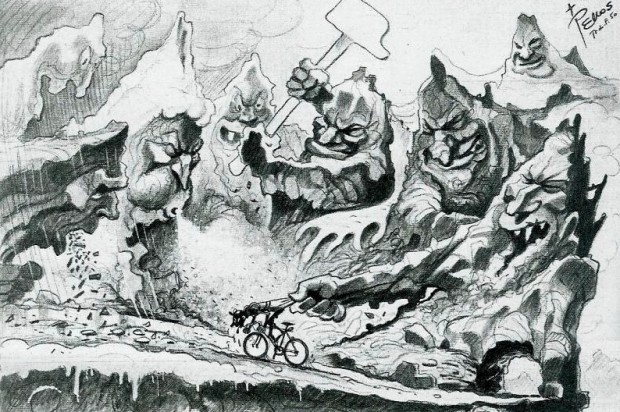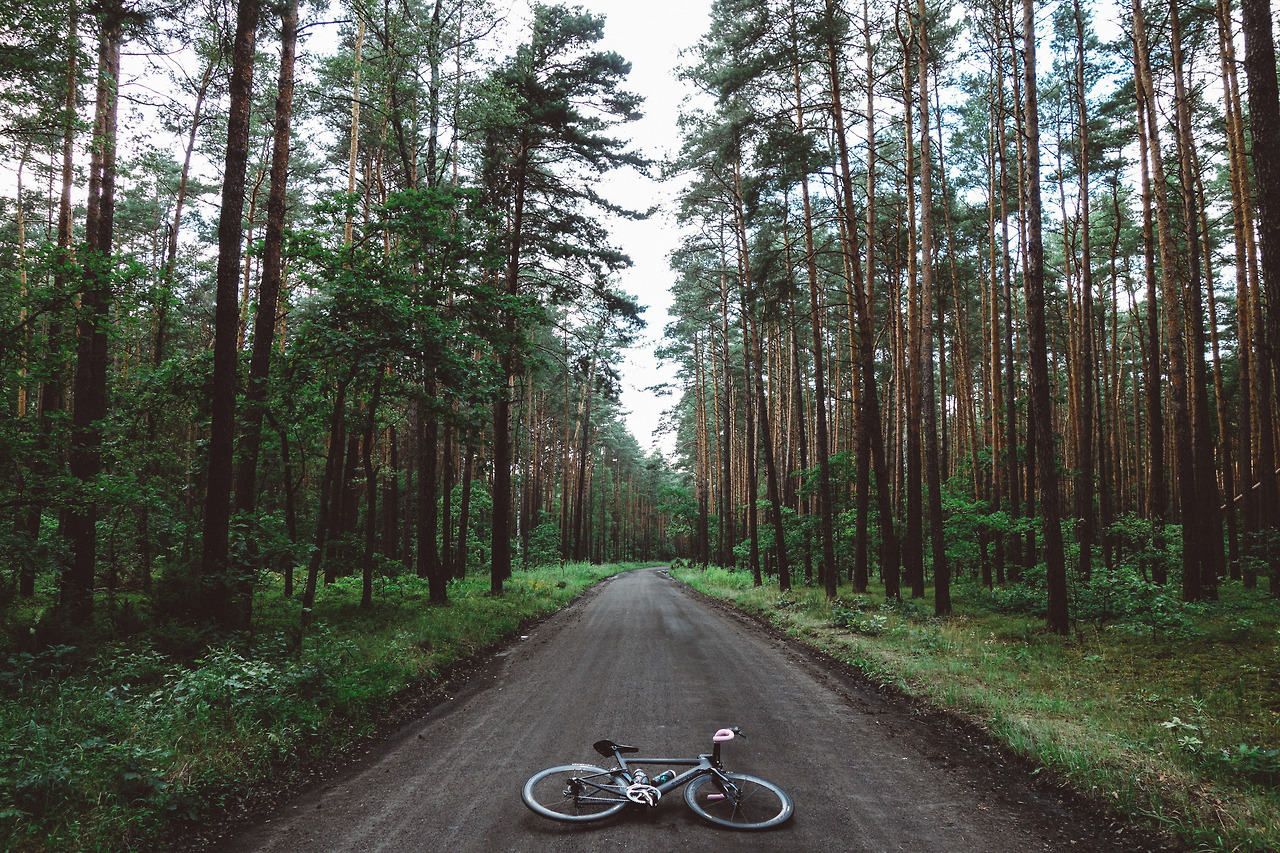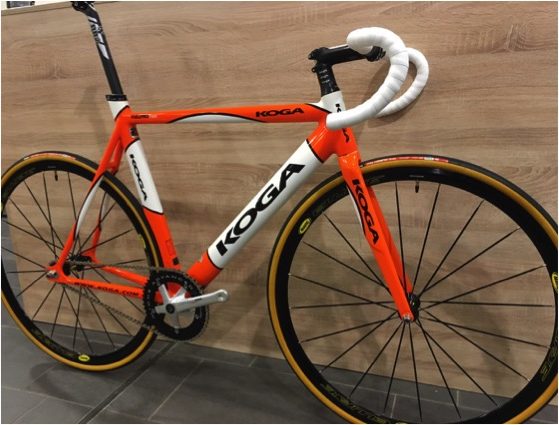Frank vs. The Volcano: Haleakala, Part Deux

The French call it la fringale. It’s one of the worst conditions that can befall a cyclist, this, when our reserves are tapped dry and yet we still have some distance to ride and some obstacle to cover. It’s happened to me twice in my life, and one of them was when I rode Haleakala in January. Of course, I haven’t looked up the exact definition of this wonderful word – fringale – mostly because I’m afraid the definition won’t express to me the meaning I’ve already applied to it. I see the words “fringe” and “gale”, overlapping such that you can’t spell one without the other. Fringale expresses, in my interpretation, that you’ve been torn to shreds (fringe) and left to be scattered to the four winds (gale).
As I set out to ride Haleakala in January, several factors would conspire against me during the effort that lay ahead. First, I was completely unprepared for what it meant to ride the longest paved climb in the world, a climb which also almost paradoxically represents the planet’s shortest ascent from sea level to 10,000 feet*. Second, I was a full 9-month gestation from peaking. Third, I was overly optimistic of my post-holiday form, based largely on evidence gathered during much shorter and easier rides. Fourth, I overestimated the importance of riding the base á bloc in order to gain time where the gradient better suited my riding style. Fifth, largely due to the previous, I would get a bad case of la fringale with almost three-quarters of the climb remaining.
I’ve always believed that each mistake contains a lesson to be learned, and as such, I had several apples to bring to Professor Experience if I was to have any hopes of improving on my time. Within a week of returning from Maui, I was in the midst of planning my rematch. I was training better, eating better, and drinking better (which is the same as drinking less, given that I was a semi-professional drinker, but “less” is a more disappointing word than “better”). In training, rather than focusing on doing my most difficult climbing routes as I usually do, by riding hard uphill and recovering between climbs as a sort of natural interval workout, I shifted my focus to sustaining the high intensity between the climbs as well, in order to simulate the pressure of a long, hard climb. I also took to heart the sage advice from D.S. Gianni, which was, “The time you gain on the bottom by riding hard is nothing compared to the time you’ll lose up top when you’re blasted.” Finally, I reserved a very healthy respect for Pele, the Hawaiian Goddess of Fire whose foot soldier, The Man with the Hammer, lurks on these slopes.
It was with a completely different mindset that I leaned into the first pedal revolution as I started my rematch. A cooling rain fell steadily, and a strong wind was at my face; the rain was welcome, the wind was not. My mind was steeled against what would surely be another four-hour (or more) intense effort, but the lessons were applied at all their moments; I rode within myself on the lower slopes, and kept the pressure on during the steepest section, from 3,500 to 6,500 feet, knowing these were harder than the rest and thus not letting myself be bothered by a drop in pace.
But we athletes are suspicious creatures, for whom ancillary events take on a larger meaning. Somewhere along the Haleakala Highway, at around 3,000 feet and with still-good legs, I witnessed a strange event: a white German Shepard taking down and killing a fawn. I immediately knew it was an Omen of some kind, surely foretelling my fate higher on the mountain. The only problem was that I wasn’t sure if I was supposed to be the dog or the fawn.
Once past the Ranger Station at the entrance to Haleakala National Park, near 7,000 feet, where the road gets easier but the elevation begins to take it’s cruel toll, I could cling to the hope that Pele would smile on me that day and I was increasingly confident that I was in fact the dog and not the fawn. Up past 8,000 feet and Michelle delivered my first and only split: 3:25 – sub-four is possible, but only with a hard effort from there onwards. I was encouraged by the news, yet the thought of continuing – or, indeed increasing – the effort was unwelcome. I would have almost preferred to be told I was slower than last time so I could ease off and only busy myself with thinking up good reasons why I would have deliberately ridden the hill more slowly this time. The rain and wind at the base would have featured a starring role in these justifications.
Instead, I was tormented by the idea that I might ride up in four hours and one minute or, even worse, four hours even, to be haunted by the knowledge that I most certainly could have shaved the time from my ride to go sub-four. The pressure in my legs increased in tandem with my growing desire to coax more speed from the pedals. And therein lies the cruel truth of climbing above 7,000 feet: you can’t dig deep anymore; there simply is not enough air for you to fuel your muscles.
In the midst of this increased effort, just before 9,000 feet, I was faced with an apparition from my January ride: a man stood next to his bicycle, suffering from severe cramps. A double take to make sure my mind wasn’t playing tricks on me, and then a word of encouragement for him to carry on (which he did).
The road from 9,000 feet is the easiest 1,000 feet of the lot. With the very painful exception that there is a steep, final ramp that takes you to 10,000 feet and the summit. As you claw your way along the mountainside towards this last ramp, the observatory at the top comes into view. It is the closest it’s been, but it is still a long way away and distressingly high above. And then you remember that the Visitor Center, where the climb ends, is the small building to the left of the Observatory. To the left, and higher.
The bidons. The bidons. They’re just dead weight now, dragging me back down the mountain. They are nothing but two little malicious anchors, serving only to slow me down and ensure I never reach the visitor center. I hate the both of them, sitting in their cages like that. Just as Jaques Anquetil would never have won a single of his five Tours de France had he not moved his bidon from his frame to his jersey pocket, I would never have reached the top had I not jettisoned mine as I started the final ramp. That single act was the only one that saw me to the summit, 6 minutes and 40 seconds shy of the most unthinkable time possible, four hours even.
Having comfortably gone up in under four hours (3 hours, 53 minutes, and 20 seconds), I am shocked at how much easier a climb is when you haven’t bonked already before the halfway mark. I guess that’s the loophole in Rule #10:
It never gets easier, you just go faster. Unless, of course, you ride like a complete twat.
I find I have to tell myself things in order to give my mind the space it needs to prepare for a truth I’m not yet ready to know. My (repeated) declaration in the Visitor Center that I’ll never do the climb again is such a thing. So shortly after the effort, I’m not prepared for the fact that I will soon be plotting my next assault on the mountain. I need a few minutes to savor the accomplishment before marginalizing it by declaring I’ll do better.
But I won’t go up again only to carve 5 or ten minutes off my time. 3:53, 3:50, 3:45; they are all the same. Next time I go up, it will be for sub-3:30. I’ll have to come up with a plan for that one. And I’ll probably need more of Gianni’s dog vaccinations.
Video: Frank vs. The Volcano: Haleakala, Part Deux
[youtube width=”615″ height=”375″]http://www.youtube.com/watch?v=NzgkNVxXeOI?hd=1[/youtube]
Photos: Frank vs. The Volcano: Haleakala, Part Deux
[dmalbum path=”/velominati.com/content/Photo Galleries/[email protected]/Haleakala August 2011/”]
*The elevations in this article will generally be referred to in feet as this is how the roadsigns along the road are measured and, while it breaks with the convention set forth in Rule #24, these measurements have been forever burned into my brain. 10,000 feet is 3048 meters.

